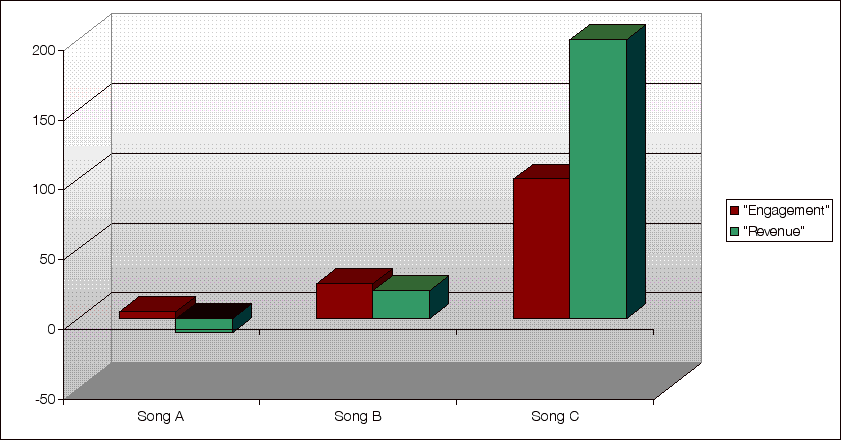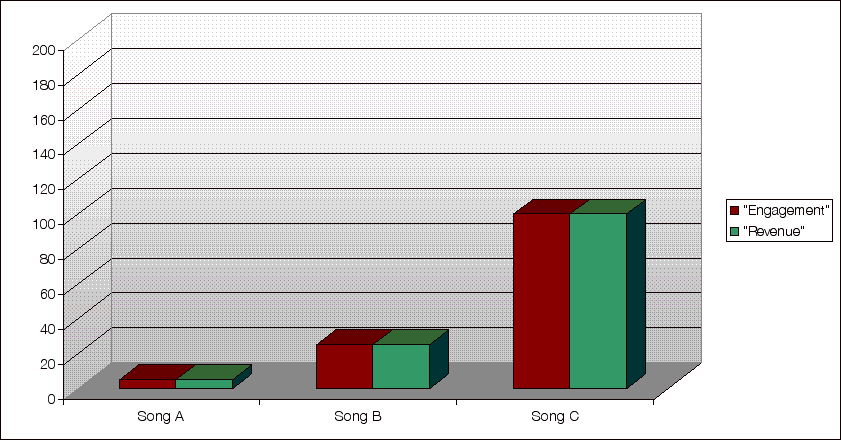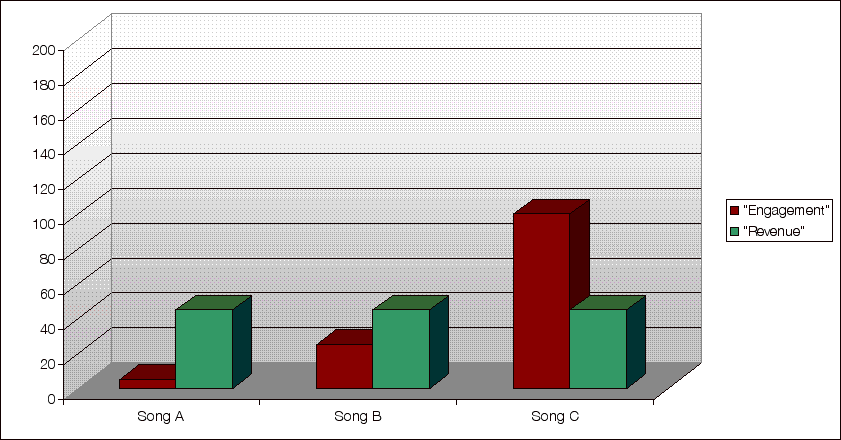With the increasing ability for people to access, blog, manipulate, send and receive digital content such as music, many people have been trying to figure out how musicians can actually earn money in 2010. From the excellent work of The Cynical Musician it appears that the various new digital tools, while solving the artist’s problem of promotion and distribution, have not in fact leveled the playing field at all in terms of revenue.
Conveniently enough, however, many countries are overhauling their copyright law to modernize and take into account these new technologies. I’ll explore here the idea that while these new tools are currently subject to the same power relationships as have always existed, there are options available to update the law in a way that could create a more fair system.
Conveniently enough, however, many countries are overhauling their copyright law to modernize and take into account these new technologies. I’ll explore here the idea that while these new tools are currently subject to the same power relationships as have always existed, there are options available to update the law in a way that could create a more fair system.
A case study
As a case study I’ll use three categories of songs of varying levels of commercial potential, with examples of each from the band Blur. Examples are from the 1990s, a “simpler time” when promotion and distribution was firmly out of the hands of artists themselves.
Song A is in many ways a pretty mediocre song. Nobody who works in music would think it has any chance of becoming a hit. Sadly, when one runs a record label or is a successful artist one is bombarded by these types of songs. I’ve chosen 1994 B-side “Rednecks” to represent this class of song. This type of song, if released at all, is invariably a B-side.
Song B is a good song, capable of being some people’s favorite song; not likely to cause people to change radio stations but not likely to be get many requests either. Most commercially-released music, the majority of most albums, falls in this category. “He Thought Of Cars,” from 1995’s The Great Escape, is an example.
Song C is a bona-fide hit, invariably chosen by the record company as a single. These are rare. Type-C songs are not just popular but disproportionately popular, meaning that while people are more likely to like these songs, they’re far more like to “engage” in them (by buying, requesting, blogging, downloading, etc.), compared with Type-B songs. Some songs just encourage us to act. The fact that most people constrain their engagements to only these songs means that peoples tastes are inherently inegalitarian. The obvious choice is “Boys And Girls,” from 1994’s Parklife.
Just as the “engagements” generated by type-C songs are disproportionate, we can assume the pay is even more disproportionate. “Rednecks,” as a B-side, would have been considered a write-off by the label. As an example, most cd or vinyl singles – remember this was back when singles sold well – would have what’s called “A-side protection”, meaning that producer royalties from the sale of the single would go only to the producer of the A-side. This is because the B-side is often assumed by all involved to have had nothing to do with the success of the single.
“He Thought Of Cars” was not a B-side but an album track and so would have had more promotion and generated more revenue than “Rednecks.” However, the real bonanza would have been reserved for hit single “Boys And Girls”, which was played on radio stations world-wide (generating performance royalties), licensed to countless compilations and possibly also used in film and on tv. This was because their record label, like all labels, concentrates on promoting just type C songs like “Boys And Girls,” that have disproportionate ability to generate engagements and therefore money. This emphasis on just a few songs - the bane of most artists, who might want to see songs treated equally - is to maximize return on the label’s investment.
Encouraging this strategy is the fact that as a song generates more money, terms become more favorable to the label (and hopefully artist) and it becomes easier to collect what is owed. An example of this is money held in overseas accounts – the lower the amount, the less likely those owing are to actually pay. I learned this the hard way when the New York-based independent distributor for the first vinyl release by my Canada-based record label stopped taking my phone calls as soon as I asked about the $180USD I was owed. Starting a label one quickly learns that there are power imbalances that can disadvantage you in many ways.
Our options
Most people would agree that artists should be paid for their work (though obviously we differ in the amount), the question then remains: if change is inevitable, then should we also change how we pay our musicians?
We have a couple of options, which would imply several different business/government models:
Option #1 is the status quo, seen above in the comparison of the three classes of songs and illustrated below in Figure 1. Musicians are paid according to the level of engagements that consumer behavior indicates - radio, sales, downloads, club play – filtered through the power relationships inherent in the music industry.
Big Type-C hits win big, even beyond their disproportionate popularity, at the expense of Songs A and B. When costs are factored in, Song A often loses money, hence its green bar on the graph is negative.

Figure 1 – Status quo.
Option #2 would pay musicians as consumer behavior indicates, but without being modified according to the music industry’s existing power relationships. Compensation would be based solely on the degree to which people engage with the music. This is probably what most laypeople now assume happens:

Figure 2 – Pay according to engagement.
Priorities
For those who are concerned with questions of equality, it seems at least logical to try and get from the situation in Figure 1 to the situation in Figure 2, so that the quality of the music alone – as measured by the “engagements” it generates - determines how artists are compensated, and not existing power relationships in the industry. An example of a strongly pro-status quo option is the Anti-Counterfeiting Trade Agreement (ACTA), which, as a wish list of cultural big-business demands, clearly looks to cement and spread existing Western power relationships to other markets. The best example of a more fair option at this point is the Songwriters’ Association of Canada (SAC)’s proposal for a levy of a few dollars per month on broadband internet service, for distribution to creators, perhaps mixed with the “opt-in” approach taken by Noank Media in China.
While some otherwise astute commentators have called this levy approach “socialist” – see point #5 here – it is nonetheless the option that currently best reflects the individual merit of the songs concerned. This option supports that some songs – the Song C-type hit – are massively, disproportionately popular and pays them accordingly. It reflects the inegalitarian form that people’s engagements take without exaggerating it.
A truly – some would say excessively - “socialist” approach would create an Option #3, where artists are compensated according to the work they put in. This option, which would counteract our inegalitarian engagement tendencies, would appear something like this:

Figure 3 – “Socialism.”
Under this option the vast majority of musical works would be paid more, at the risk of removing the financial incentive to write a certified Song C-type hit a la Parklife, though obviously there would still be social and artistic incentive. Whether this is a worthy object to strive for would be the subject of another debate, also considering whether we reward the process or the product. If the process itself – the fact of people taking time from their busy life to write a song – is beneficial to Western society then this is obviously the best option.
At this point, however, it’s clear that most people reading this would say that it is the product and not the process that should be rewarded, pointing us back to option #2: compensation according to popularity as determined by behavior but without the existing power relationships of the music industry.
How would we get there? While a small number of artists have successfully embraced new models that largely bypass the existing industry by building relationships directly with their fans, these are in addition to and haven’t yet threatened to change the existing power relationships. Also, these are mostly dealing with relatively small amounts of money; whether these new models could support a Song C-type hit remains to be seen.
Consequently, while our ability to engage music has certainly gotten more fair with the internet, most creators’ ability to get paid is largely unchanged, with agreements such as ACTA threatening to further lock that in. If we are to embrace change, it should at least be change that makes being a musician more fair, not less, one that pays according to the quality of a given song according to the engagements it inspires. Of the options available to us at this point, a SAC/Noank-style plan seems the most compatible with values of both fairness and pay-according-to-merit.
Matthew Hiscock is a music lifer, occasional journalist, record label manager and alumni of Concordia University’s School of Community and Public Affairs. You can hear his music here and read his interviews with “bass music” producers here.